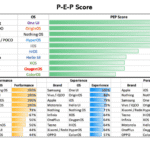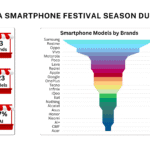2026 is going to be yet another interesting year for the smartphone industry. We already getting a glimpse of these super smartphones with the launch of iQOO 15, OnePlus 15, Realme GT 8, Oppo Find X9 and Vivo X300, Xiaomi 17 and other flagships which are yet to take our smartphone experiences to next levels. The chipset makers Qualcomm and MediaTek have already announced their flagship processors that will be powering these super smartphones. Be it Snapdragon 8 Elite Gen 5 or the MediaTek Dimensity 9500 super chipset, these are overflowed with processing capabilities and compute powers to equip the next generation of smartphones that are going to be experience focused than only loading them with specifications.
Of course, hardware will remain central and key to the capabilities of a smartphone, for that matter any compute device. The smartphone industry will continue to equip their devices with top-end specifications. We will continue to hear from smartphone makers about 200MP camera, 16GB LPDDRX RAM, UFS Storage, 7000 mAh SiC battery and specifications like that. But this now becomes hygiene and no longer remains a delight factor! This has already started to decline delighting customers. In our analysis first reported in this Dec 2024 report, we have already shown how there is a shift towards customers valuing post-purchase experience for delightful memories than pre-purchase specifications which trigger sales.
The smartphone makers and the entire ecosystem have already picked up this trend and taken a very bold step of adding another layer of software where they could pep-up the user-device interaction. In this InsightsPro we benchmark this new set of brand operating systems which are fast replacing their custom UIs which was more for creating differentiation and adding some value-added revenues through ads and app pre-installs. Our PEP framework of benchmarking operating systems comprehensively compares and brings out unique features and functions elevating the user interaction with smartphones and other devices.
In 2026, this will be one of the key changes in the smartphone industry indicating a major shift in the product design philosophy where post-purchase experiences will be central to the design and ingredients of a smartphone. Initially, this will remain limited to the luxe (more than ₹50,000) category smartphones and down the line in 2027 and beyond we should start noticing this trend dripping to the wider segments of mass customers.
No longer will the smartphone makers keep AI enablement, etc., as the primary selling feature. They will emphasize more on how AI and other technologies and features are going to elevate the post-purchase experience. For consumers this will be a big change who will find themselves more satisfied as they will be able to extract more from the features and functions that are relevant to them. There are many users who buy smartphones with top-end specs and then never look at them. Rather, after some time of their smartphone usage, they start feeling dissatisfied as their main use cases of a smartphone do not offer them the desired experiences because the anchor specifications might have no role to play.
The smartphone brands have realized by now that hardware is not a defensible differentiator. This is the reason that we still don’t find brand loyalties very strong in the android ecosystem. Now with a strong focus on OS, these brands will start developing differentiations that they believe and understand are important for their customers. This will automatically start creating a unique identity for each of these brands paving way for loyal customers.
For the market dynamics, it means the volatility in market shares will start settling and finally we could see a period where brand market shares will start stabilizing for longer tenures, unlike what has been happening in the past; they keep on changing every 3-5 years.






Leave a Reply
You must be logged in to post a comment.